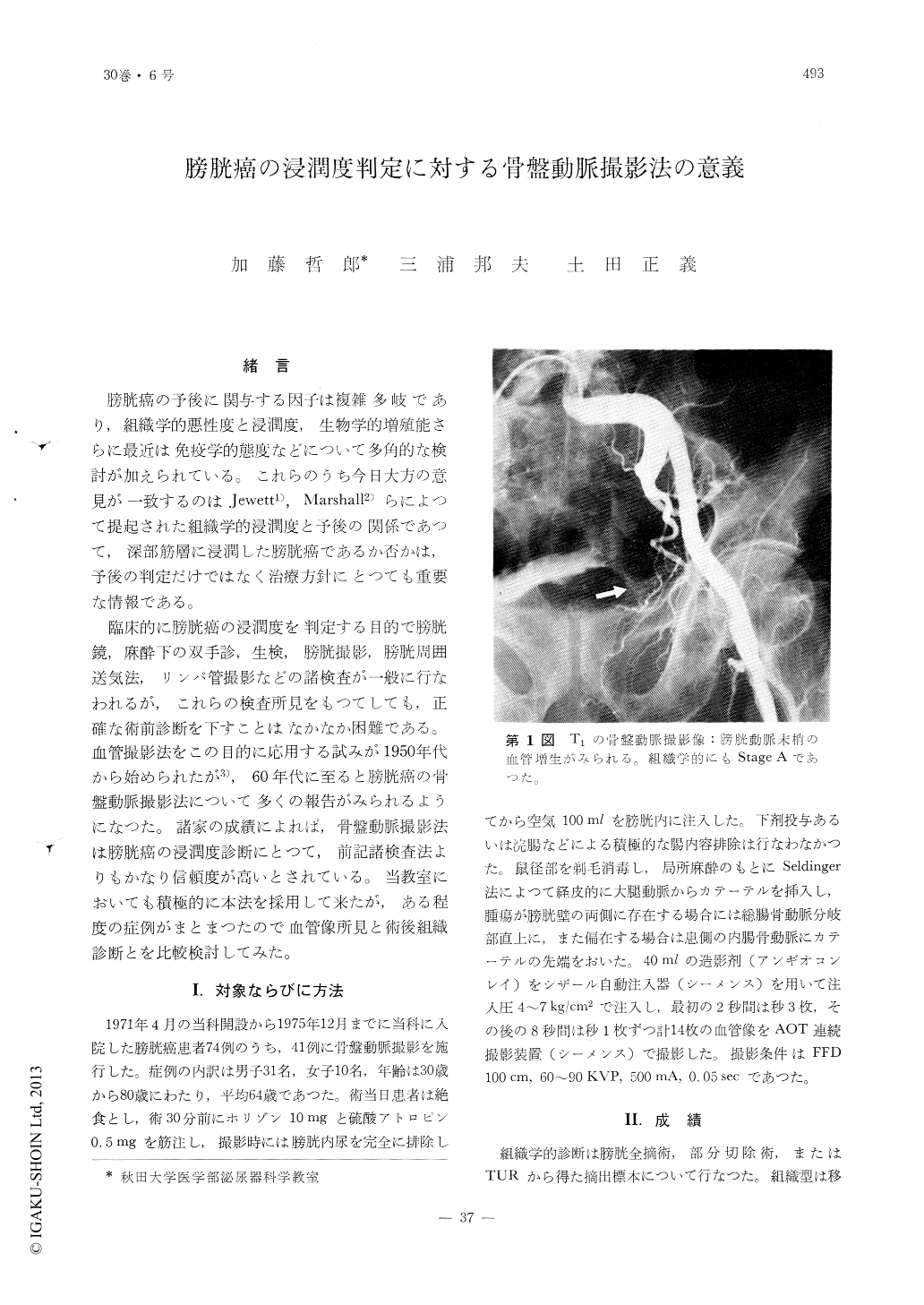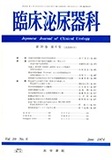Japanese
English
- 有料閲覧
- Abstract 文献概要
- 1ページ目 Look Inside
緒言
膀胱癌の予後に関与する因子は複雑多岐であり,組織学的悪性度と浸潤度,生物学的増殖能さらに最近は免疫学的態度などについて多角的な検討が加えられている。これらのうち今日大方の意見が一致するのはJewett1),Marshall2)らによつて提起された組織学的浸潤度と予後の関係であつて,深部筋層に浸潤した膀胱癌であるか否かは,予後の判定だけではなく治療方針にとつても重要な情報である。
臨床的に膀胱癌の浸潤度を判定する目的で膀胱鏡,麻酔下の双手診,生検,膀胱撮影,膀胱周囲送気法,リンパ管撮影などの諸検査が一般に行なわれるが,これらの検査所見をもつてしても,正確な術前診断を下すことはなかなか困難である。血管撮影法をこの目的に応用する試みが1950年代から始められたが3),60年代に至ると膀胱癌の骨盤動脈撮影法について多くの報告がみられるようになつた。諸家の成績によれば,骨盤動脈撮影法は膀胱癌の浸潤度診断にとつて,前記諸検査法よりもかなり信頼度が高いとされている。当教室においても積極的に本法を採用して来たが,ある程度の症例がまとまつたので血管像所見と術後組織診断とを比較検討してみた。
Stage of the bladder cancer is one of the most influential factors for the prognosis as well as the mode of treatment. Various clinical examinations are employed with the aim of staging the tumor, and pelvic aortography has been reported as a reliable clue for this purpose by some investigators.
Fourty one cases of the bladder cancers were submitted to pelvic aortography and angiographical staging was performed according to a modification of the original classification by Mikuriya-Matsumoto, i.e., Type Ⅰ corresponded to To and T1, Type Ⅱ to T2, and Type Ⅲ to T3 and T4, respectively.

Copyright © 1976, Igaku-Shoin Ltd. All rights reserved.


